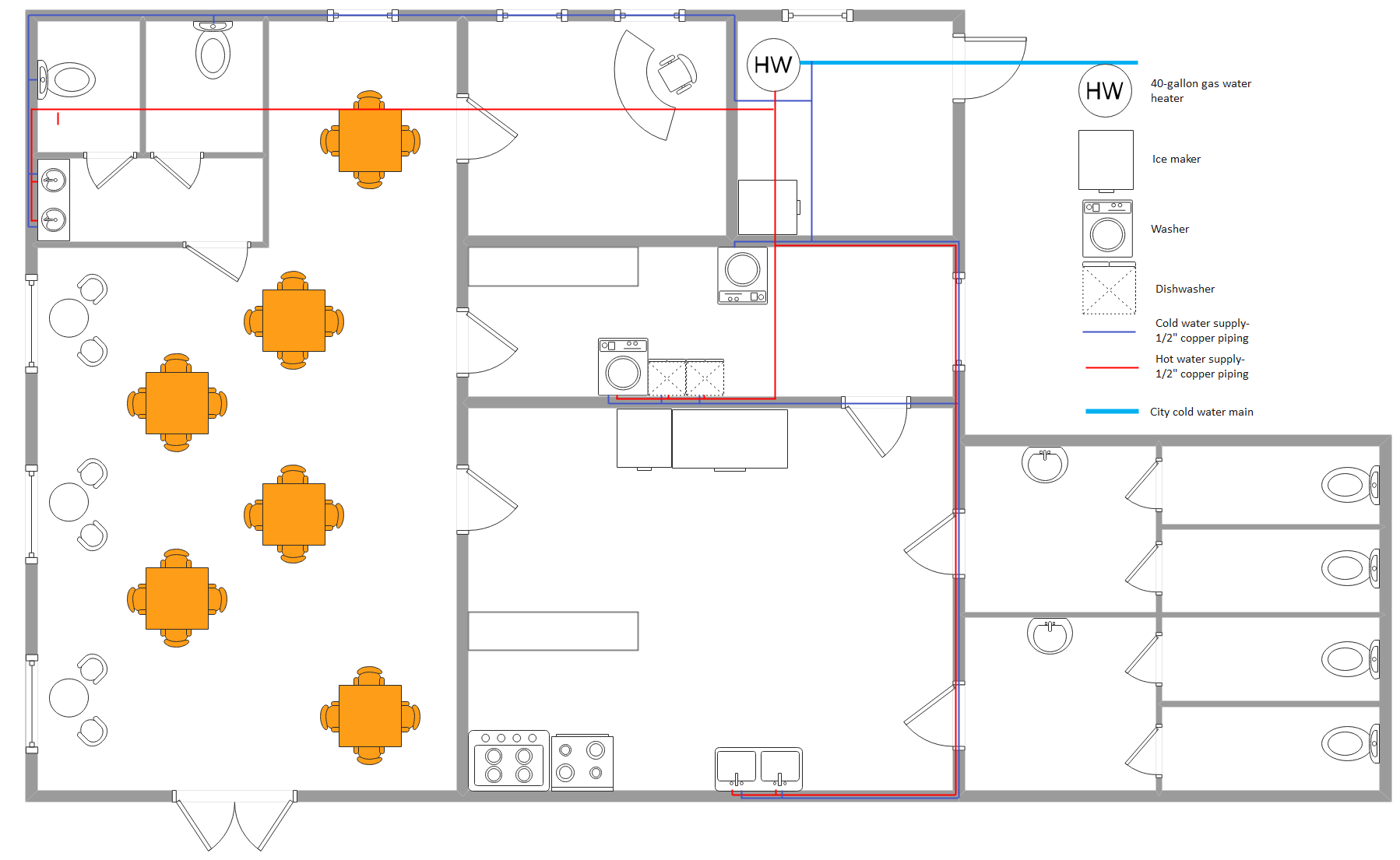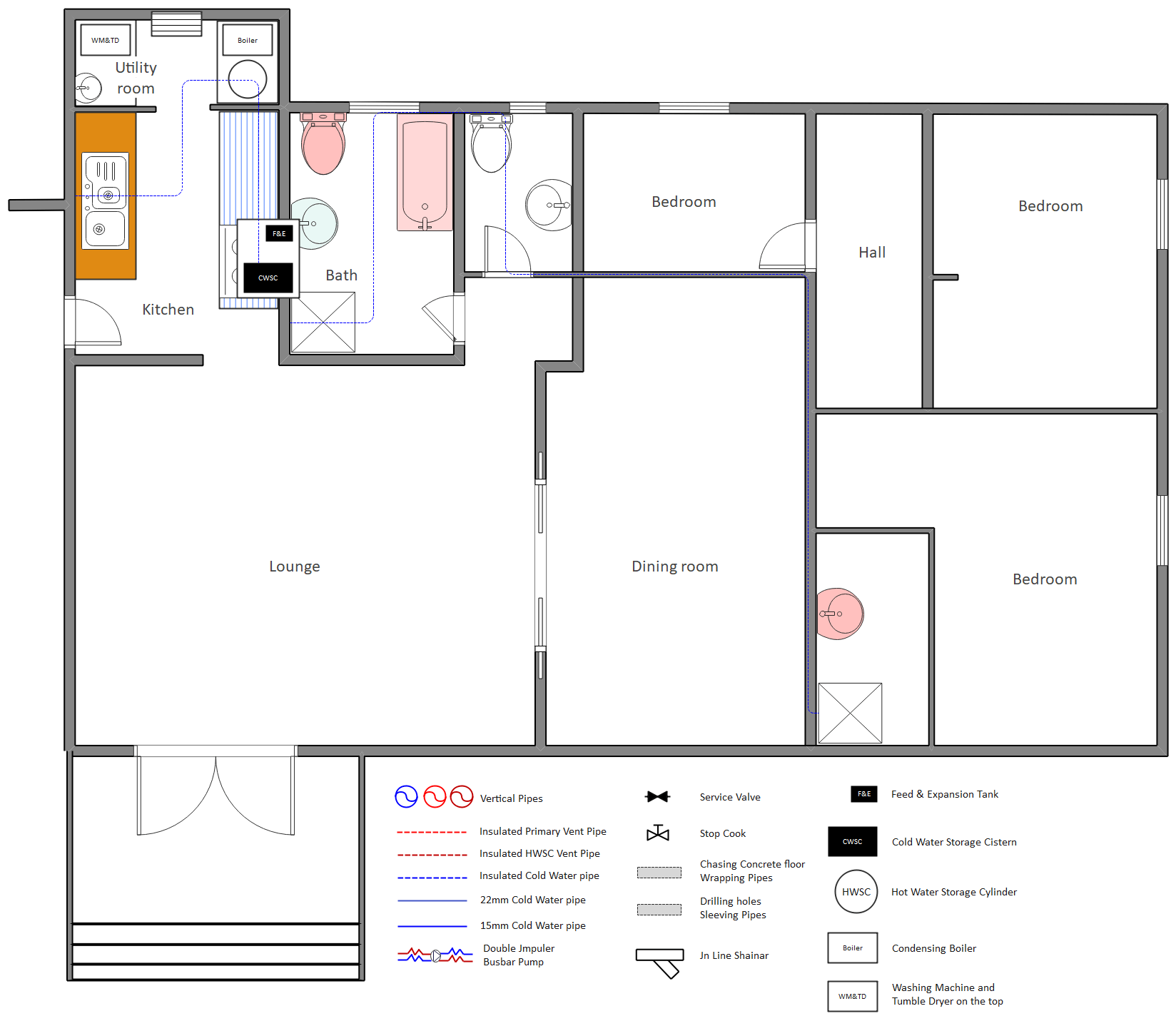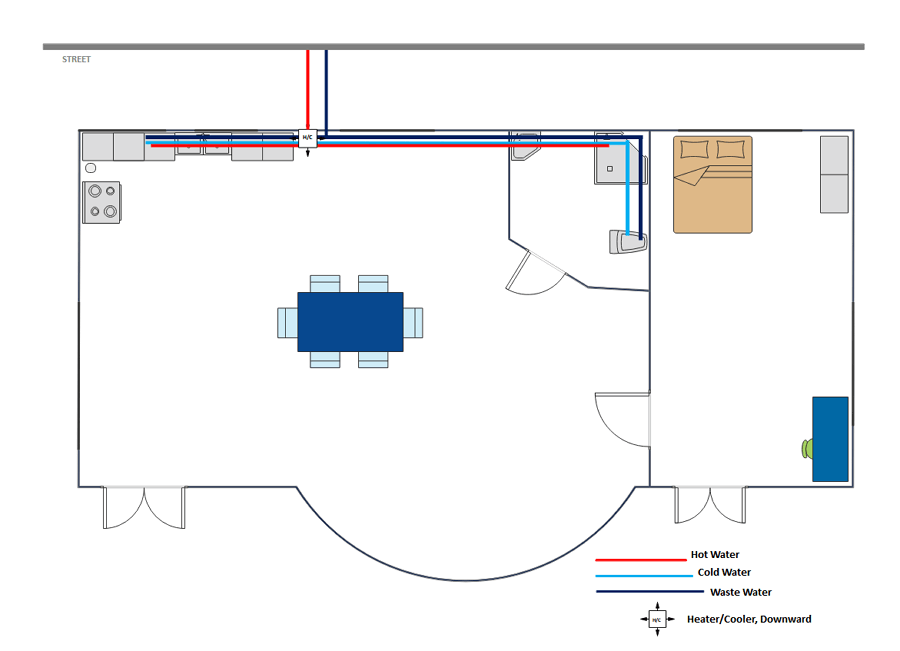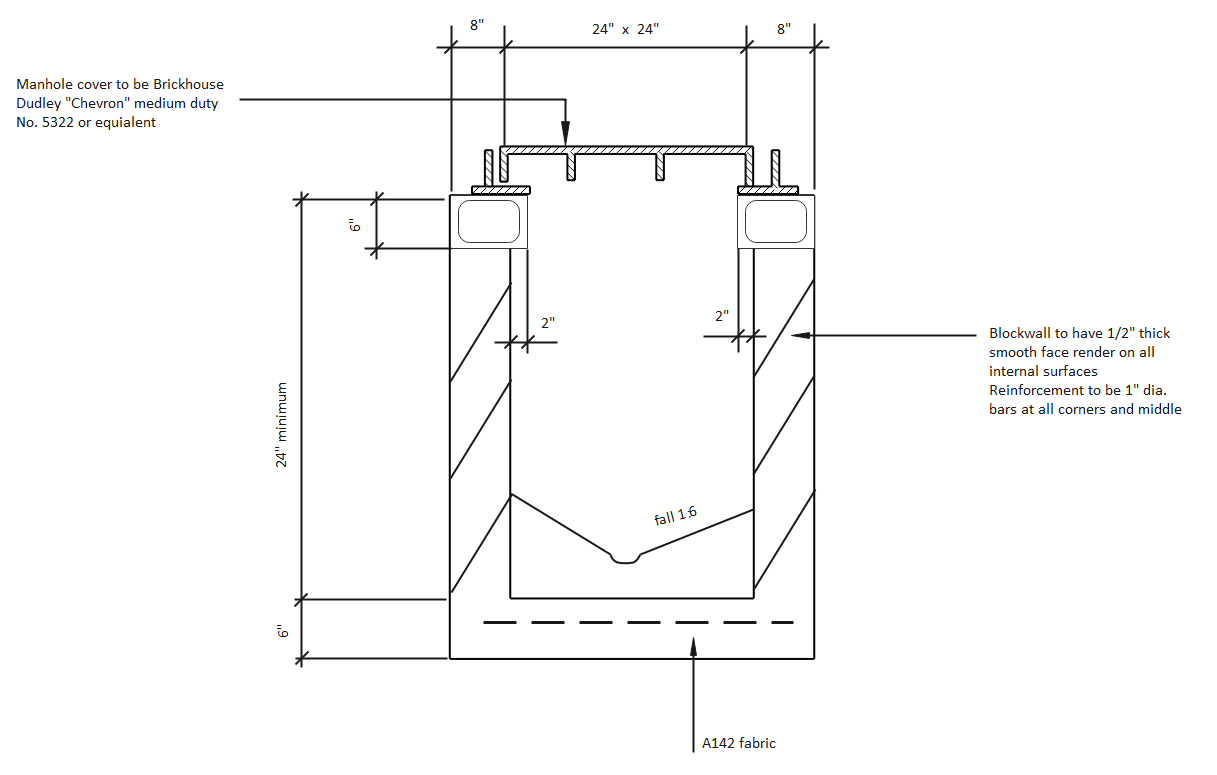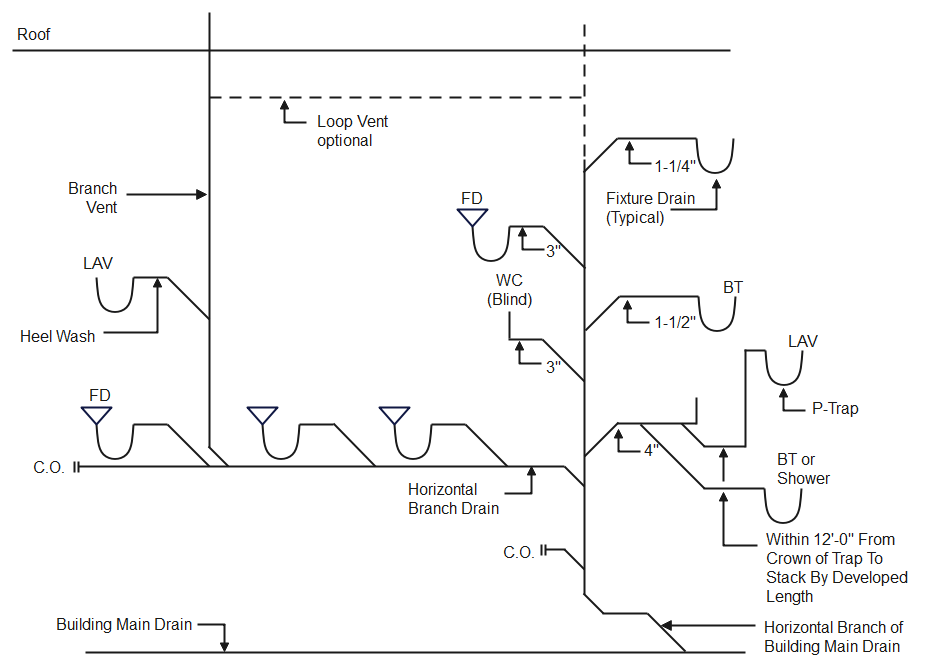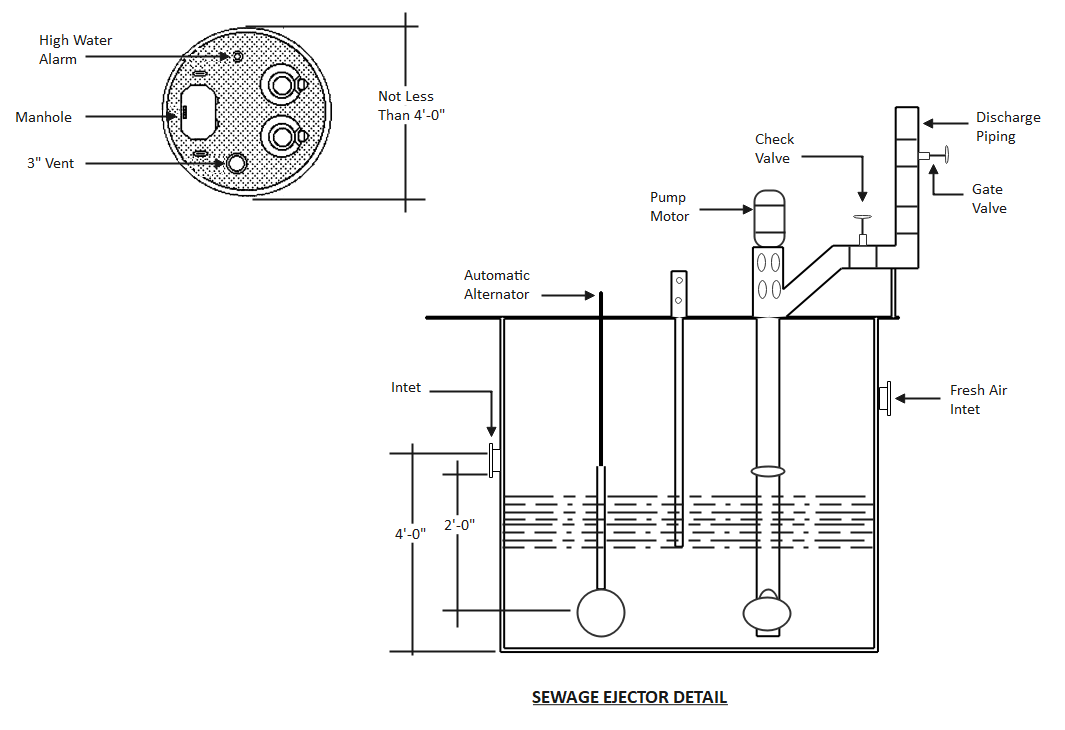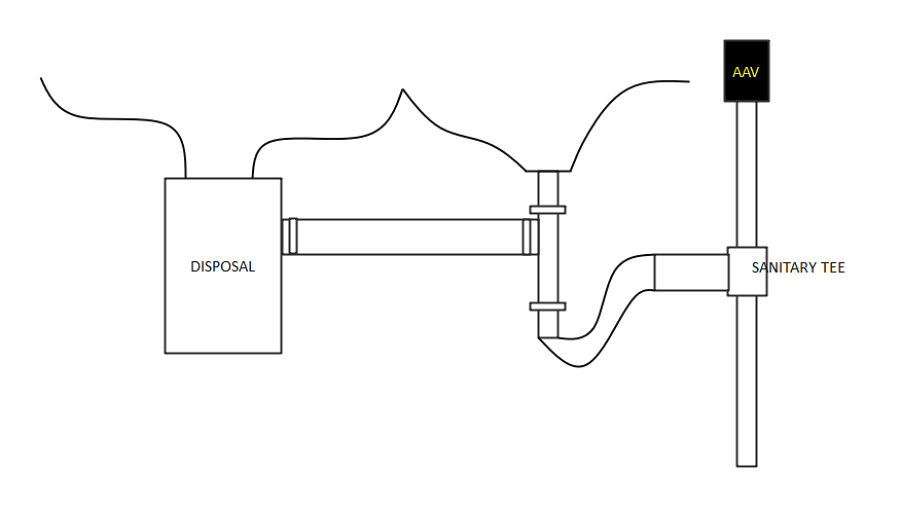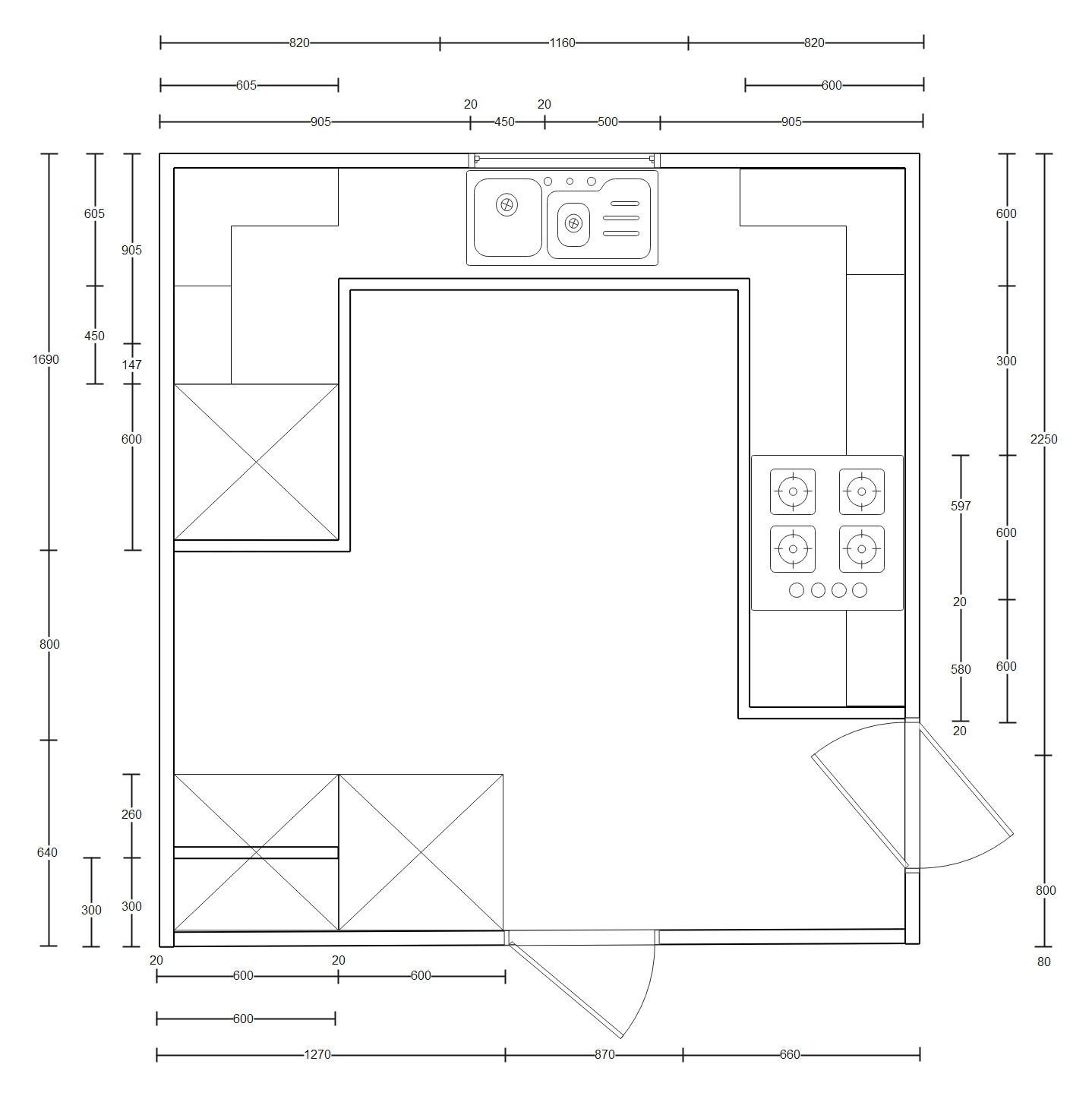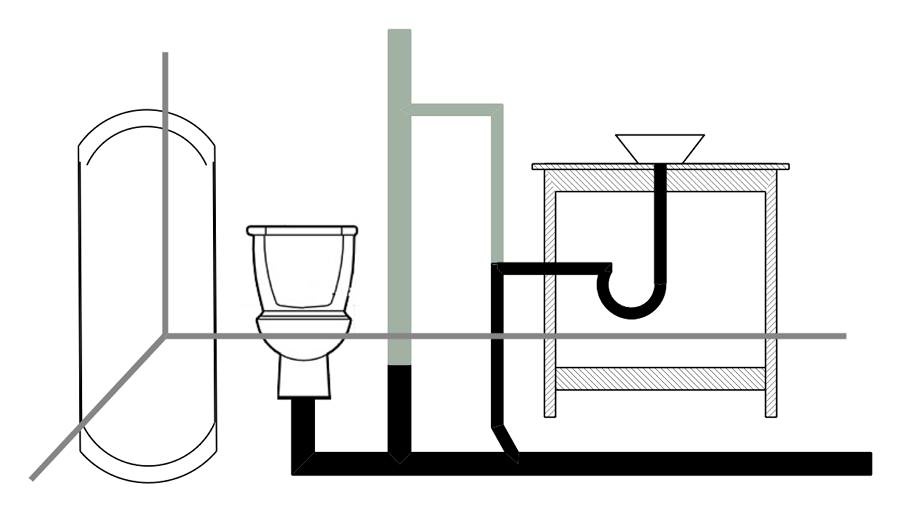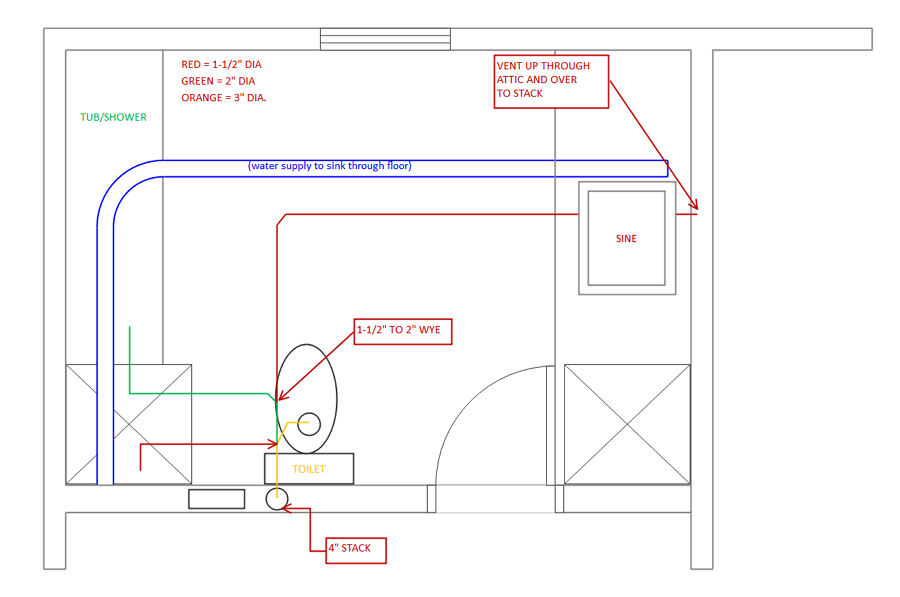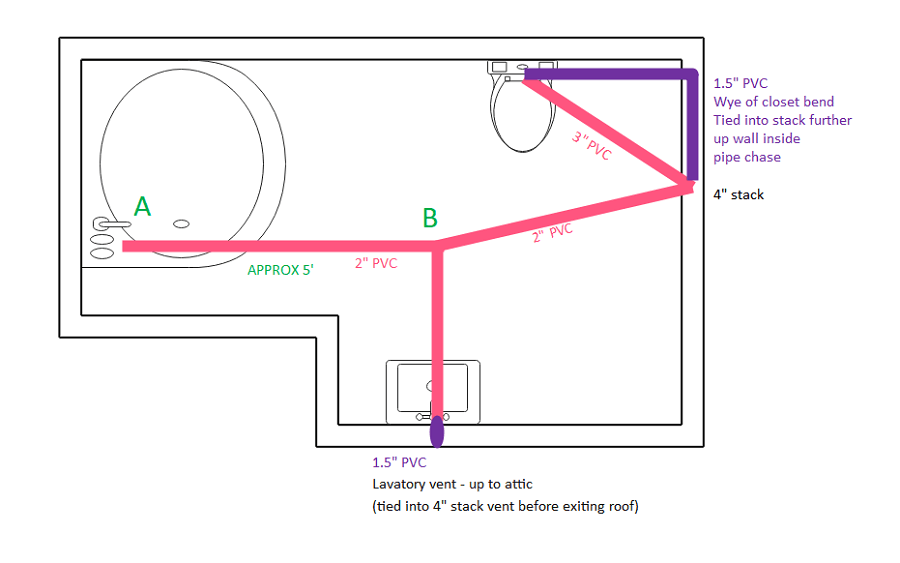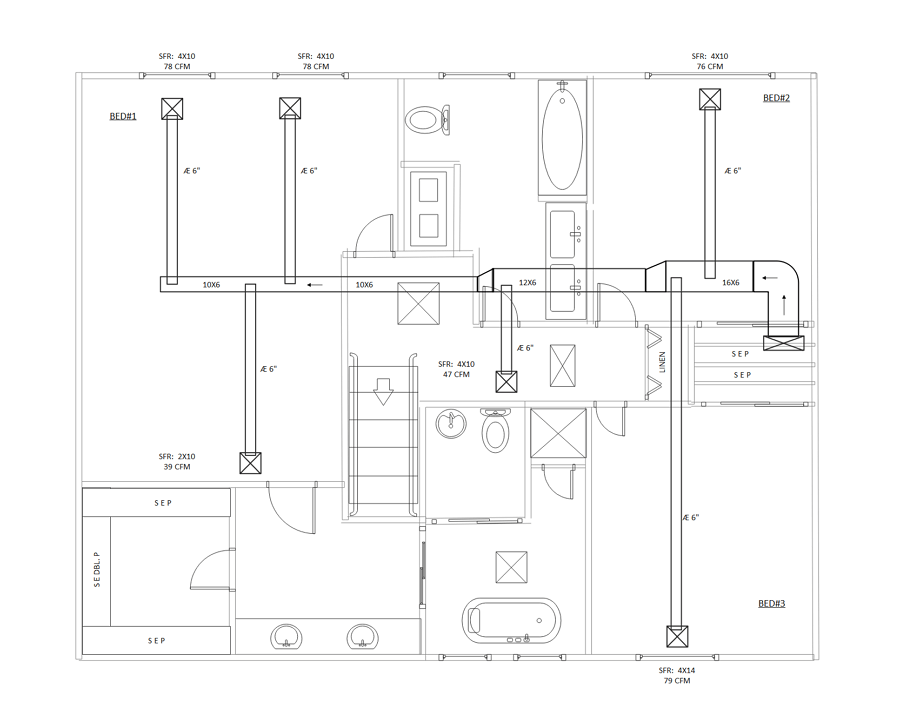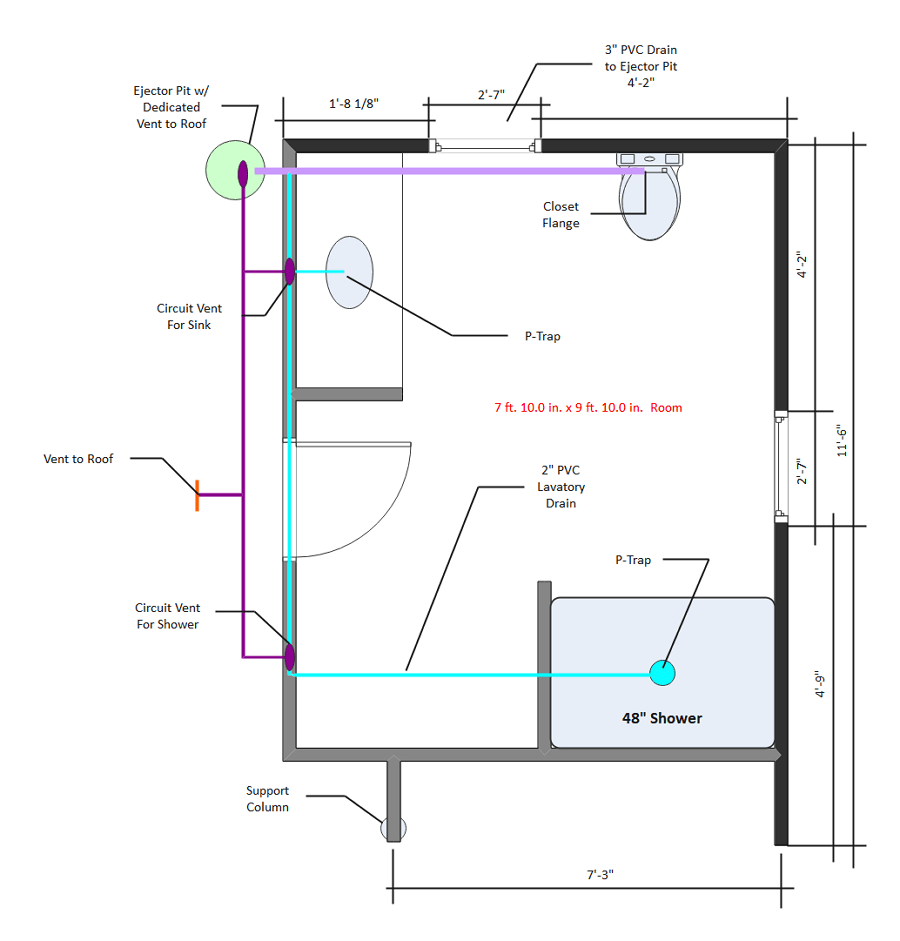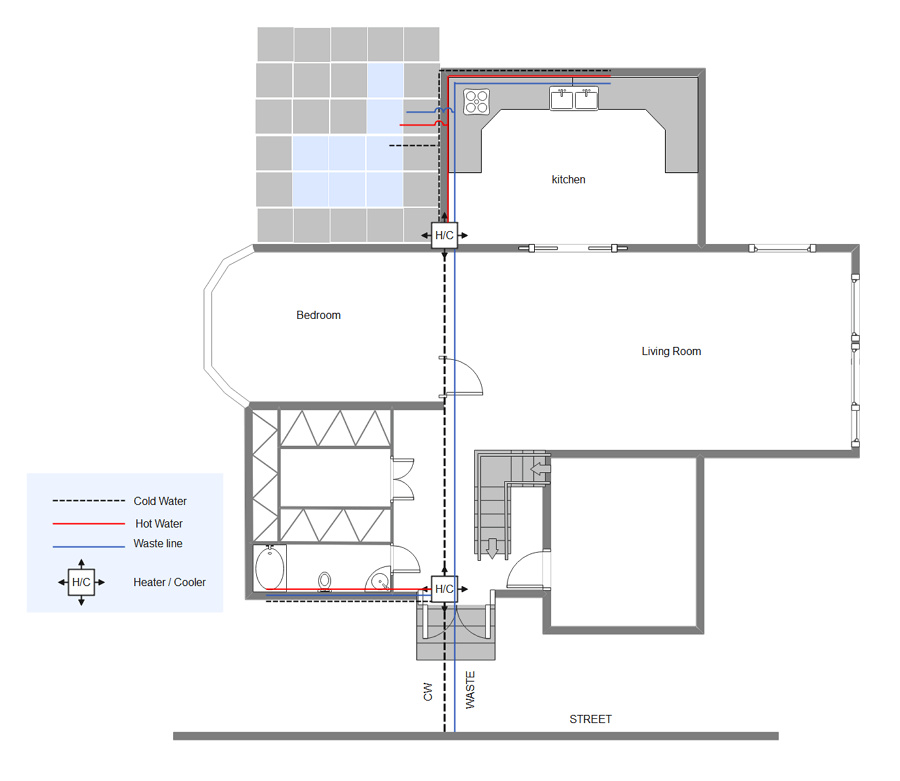Plumbing Piping Plan Examples & Templates
Ready to Create Your Professional Plumbing Plan?
EdrawMax specializes in professional diagramming and visualization. Learn everything about plumbing plan examples and templates from this comprehensive guide, including how to use them effectively. Start creating your plumbing plan today!
The plumbing system or diagram in residential and commercial buildings is responsible for delivering fresh water and removing wastewater efficiently. This comprehensive system includes distribution pipes, plumbing fixtures, vent pipes, sanitary sewers, and building drains, all requiring proper connections to function correctly.
Every building area requires a well-designed plumbing system to prevent future issues such as water leakage, clogging, hot water shortages, sewer problems, and faulty faucets. Plumbing systems are installed according to a detailed Plumbing Plan that illustrates components, dimensions, sizes, and orientations. EdrawMax provides multiple plumbing plan templates, allowing users to easily modify existing plans or create custom designs using standardized signs and symbols.

1. Free Plumbing Plan Examples & Templates
The primary purpose of any plumbing system or diagram is to provide clean, fresh water while efficiently eliminating waste throughout the building. These dual functions operate simultaneously, with proper regulation only achievable through implementing a comprehensive Plumbing Plan. Plumbing plans contain numerous components serving different purposes, with subsystems working together to complete the overall plumbing setup. These essential Plumbing Systems include:
Explore the examples below to discover detailed plumbing solutions:
- Water Supply Plumbing System Examples
- Drain Waste Vent Plumbing System Examples
- Kitchen Plumbing System Examples
- Bathroom Plumbing System Examples
- Basic Plumbing Plan Examples
1.1 Water Supply Plumbing System Examples
The water supply system forms a critical component of any plumbing installation, responsible for delivering water to toilets, showers, taps, bathtubs, sprinklers, and appliances including washing machines, steamers, and water heaters. This system incorporates various plumbing components such as pipe fittings, water pipes, connectors, service valves, and faucets. Water pipes are typically constructed from plastic, copper, or galvanized iron materials.
Example 1: Water Supply Plumbing Plan
Water systems are designed to facilitate efficient water flow throughout buildings, with configurations varying based on distribution purposes including drinking, cooking, cleaning, washing, plant watering, animal hydration, and garden/field irrigation. Water distribution extends to kitchens, bathrooms, gardens, laundry areas, garages, and pool areas. Based on these factors, water supply plumbing systems are categorized into four main types:
- Dead-end or Tree Distribution system
- Gridiron Distribution System
- Circular or Ring Distribution System
- Radial Distribution System
This water supply system plan demonstrates water flow from bottom tanks to top tanks and subsequent distribution throughout building sections.
Example 2: House Tap Water Supply Plumbing Plan
This house tap water supply plumbing plan illustrates residential plumbing configuration with different colored lines representing various plumbing pipes. Blue bars indicate freshwater supply entering the house. Residential plumbing divides into two basic systems: clean water delivery and wastewater removal, with fixtures (sinks, showers, toilets, washing machines, dishwashers) connecting between these systems. Once inside, clean water supply separates into cold and hot water systems as shown in this detailed plan.
Example 3: Apartment Plumbing Plan
This apartment plumbing plan demonstrates hot and cold water supply systems for residential units. Apartments require efficient plumbing systems serving multiple units with centralized water distribution. The plan shows coordinated plumbing infrastructure ensuring proper water pressure, temperature control, and waste removal across different apartment levels and units while maintaining building structural integrity and code compliance.
1.2 Drain Waste Vent Plumbing System Examples
The Drain-Waste-Vent (DWV) system represents the most critical component of any plumbing system, also known as the sanitary system. It encompasses all plumbing elements except water supply, designed to carry wastewater from sinks, taps, bathtubs, showers, toilets, and appliances like dishwashers and washing machines to septic tanks or public sewers. This system ensures clean water delivery while efficiently disposing of waste and sewage. DWV pipes and connections are typically concealed underground or within walls. The system facilitates air entry to maintain proper pressure and remove drain waste and greywater from residences, utilizing two pipe types: Drain-Waste pipes and Vent pipes.
Example 4: Drain-Waste-Vent Plumbing System
Drain-Waste pipes transport actual waste from sinks, toilets, showers, bathtubs, and various appliances to main sewers or septic tanks. Vent pipes serve dual functions: ventilating sewage gases through roof exhaust pipes and providing necessary air to drain-waste pipes for smooth, silent sewage drainage. This drain-waste-vent plan illustrates bathroom plumbing connection orientation and configuration.
Example 5: Drain Water Vent Plumbing
Residential properties typically feature at least one main stack as shown in this Drain water vent plumbing plan. The stack is a large vertical pipe (often 3-4 inches diameter) running from above the roof to the main sewer line. Horizontal drain and vent pipes connect from various toilets, faucets, tubs, and appliances into the main stack. Horizontal drain pipes require proper sloping to prevent water accumulation. Venting complexity is balanced by simple principles: vent pipes allow air entry behind drain water facilitating smooth flow. Unvented drain water can gurgle similarly to water exiting an upturned thin-necked bottle.
Example 6: Drain Water Vent Plumbing System
This drain water vent plumbing plan illustrates systems maintaining proper air pressure through air entry, enabling efficient sewage and greywater removal from dwellings. Fixture-produced water from sinks and showers is classified as drain water, while toilet water is designated waste water. Proper venting prevents vacuum formation during drainage, allowing free water flow. Air must enter waste pipes during water drainage through roof vents (external) or internal vents. The system maintains neutral drain air pressure, facilitating smooth water and sewage flow through drains and waste pipes.
1.3 Kitchen Plumbing System Examples
Kitchen plumbing requires careful installation and testing due to potential gas leakage and fire hazard risks. Kitchen plumbing layout plays a vital role in planning safe, efficient systems. Typical kitchen plumbing includes hot/cold water supply lines, sink waste lines, gas range connections, and gas supply pipes. Additional components often connected to sink plumbing include dishwasher disposal hookups, ice maker connections, and instant hot water appliances.
Incorrect kitchen plumbing installation can cause sink malfunction, sewer gas leakage, and damaged slip nuts. Basic kitchen plumbing process steps include:
- Hire qualified plumbing contractors
- Install proper drainage systems
- Place appropriate traps
- Install Air Admittance Valves
- Install pipes and connections
- Establish supply systems
- Install kitchen sinks
- Install garbage disposal systems
Example 7: Kitchen Plumbing System
A kitchen plumbing diagram depicts a complicated network of water supply pipes, drain pipes, vent pipes, and other components. Because plumbing is a complex system that is one of the most expensive to repair or install in a home, it is essential to understand how it works. Understanding the concept of a plumbing system allows you to understand the types of problems better. If you are planning for a remodel or a new home, a Kitchen plumbing diagram can help you in designing a system that will work adequately to pass plumbing codes. In major plumbing work, consider the following: A properly designed system will efficiently deliver water to the faucets, fixtures, and water-using appliances while carrying wastewater away without clogging.
Example 8: Kitchen Plumbing Plan
Following finishing work and kitchen furniture installation, the kitchen plumbing is connected to the water supply and sewerage system, as shown in this Kitchen plumbing plan. Use the flexible piping elements that come with this type of plumbing to connect the dishwasher in the kitchen. As previously stated, the sewer connection is made through a water seal to prevent the formation of unpleasant odors. To avoid gurgling in the sink, connect the dishwasher with a special valve, as shown in this Kitchen plumbing plan. A water filter is usually installed in the kitchen under the sink.
1.4 Bathroom Plumbing System Examples
A bathroom is a room to perform basic body cleaning. So, water supply and plumbing systems are the leading systems installed in a bathroom. The bathroom is where the plumbing system is the most needed. In a bathroom, a plumbing system must deliver clean water and take the waste and sewage out of the dwell. The bathroom plumbing system consists of water supply plumbing and the Drain-Waste-Vent system. The standard size of the sink's pipe is 1.25 inches in diameter.
The standard bathroom plumbing system is usually based on five waterlines:
- Cold waterline for toilet
- Cold and hot water for sinks, showers, and bathtubs
- Flexible lines for hot and cold waterlines
Example 9: Bathroom Plumbing Diagram
The bathroom plumbing plan demonstrates the plumbing connection in a bathroom where tub shower, tub drain, tub trap, vent stack, closet bend, toilet water supply, air chambers, lavatory water lines, lavatory chains, and cold hand ot water pipelines. The vent stack is directly connected to the toilet and indirectly to the bathtub/shower and takes out the waste.
Example 10: Bathroom Plumbing Plan
To create a bathroom plumbing plan, draw all fixtures to scale and ensure that they are not too close together. Mark the drain and vent lines for the institutions before adding the supply lines. Create riser drawings that include vertical pipe runs as well. A bathroom plumbing plan depicts the system that will bring water in and remove waste. Water supply lines, drains, vent pipes, valves, and fixtures such as toilets and sinks are common components. These plans frequently use a variety of official plumbing symbols to denote different elements, and producing plan views and riser drawings by hand or on a computer is fairly simple.
Example 11: Bathroom Plumbing System
Installing a bathroom plumbing system typically entails installing a system of pipes, drains, valves, and other fittings for water distribution. The current trend is to have concealed plumbing, so it is critical to avoid any mistakes, as any minor re-do work will require you to break wall tiles. A general understanding of bathroom plumbing will help you know if you're remodeling or redesigning your bathroom. It will be useful when remodeling or updating your toilet, but it is also useful to know if something goes wrong with your bathroom plumbing - you will know what the issue is and possibly how to fix it.
1.5 Basic Plumbing Plan Examples
A plumbing plan or a plumbing drawing is a technical overview of the system that shows the piping for freshwater going into the building and waste coming out. In most architectural projects, you will learn that a plumbing plan includes drawings of the water supply system, drainage system, irrigation system, stormwater system, etc. At the same time, a plumbing plan drawing will differ from building to building. For instance, a residential plumbing layout plan would differ from a general plumbing layout plan or a commercial complex.
Example 12: Plumbing Plan for House
Plumbing and piping plans and fixtures installed in a building for the distribution and use of drinkable water and the removal of waterborne wastes. A plumbing and piping plan is usually distinguished from water and sewage systems serving a building group. The plumbing and piping plan example shows several types of plumbing systems in building construction: single stack system, partially vented single stack system, one-pipe system, and two-pipe system.
Example 13: Plumbing Plan Layout
This plumbing layout plan depicts fixtures, water supply, waste-disposal lines, equipment, and other sources of supply and disposal. This Plumbing Layout Plan is much easier to understand and is invaluable to those in charge of preparing material estimates and the craftspeople installing plumbing systems. The first stage of any project is the concept and design. The next step is to create construction drawings when everything is in place. When a floor plan is finished, it is given to the mechanical engineer, who will generate plumbing drawings. The illustrations are added to the construction-drawing set. A set of construction drawings' mechanical division will include, in addition to plumbing plans and details, drawings for any heating, ventilation, and air-conditioning systems a building may have.
Example 14: Plumbing Plan Example
A well-constructed plumbing plan drawing in core building setups will depict the housing system that will bring water in and take the wastewater (in liquid and solid form) out of the house. Before you set out to make your plumbing plan using EdrawMax, you should understand what is included in a plumbing plan drawing.
2. How to Use Plumbing Plan Templates
EdrawMax is a vector-based software that provides various templates for your plumbing Plan. It provides an easily understandable interface for its users to draw efficiently and helps users edit existing templates and layouts and make their designs or templates. It also offers 26,000+ symbols to illustrate your Plumbing Plan. You should follow some steps to create or get the templates from EdrawMax. You can learn how to make a plumbing plan in detail from this plumbing plan guide.
2.1 Make Plumbing Plan from Desktop
There are two methods of using a plumbing plan template to design a perfect ceiling layout. The first method lets you develop a plumbing plan after downloading the template and the EdrawMax diagramming software on your computer. The following is the guide for the first method of using plumbing plan templates
Step 1: Install EdrawMax
You can edit the templates directly from this page. First of all, when you click the templates on this page, you can download EdrawMax easily or download EdrawMax here.
Step 2: Download the Template
After installing EdrawMax, you can go and download the template by clicking on the bottom right corner or looking for a template in the EdrawMax library without going online on the desktop.
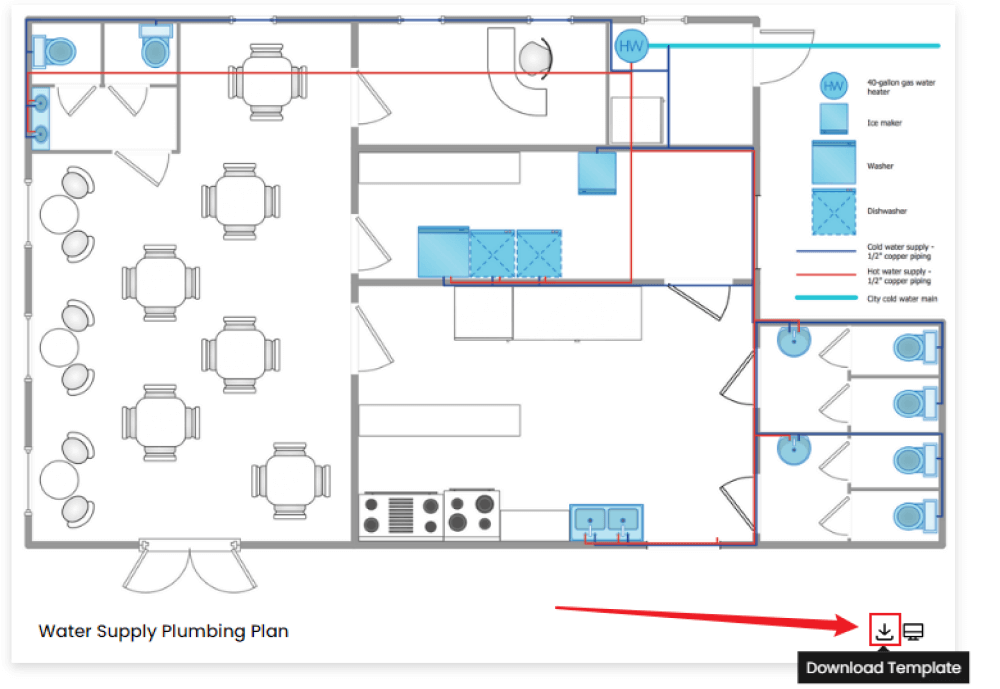
Step 3: Open the Template
After downloading the template, you can double-click to open it in EdrawMax diagramming software, or you can open EdrawMax beforehand and navigate to the template to open it. Every plumbing plan diagram is complete with symbols. Head to the 'Symbols' section and click on the 'Plumbing Plan' and 'Floor Plan' to import essential symbols. Learn more about plumbing plan symbols and find the symbols you want here.
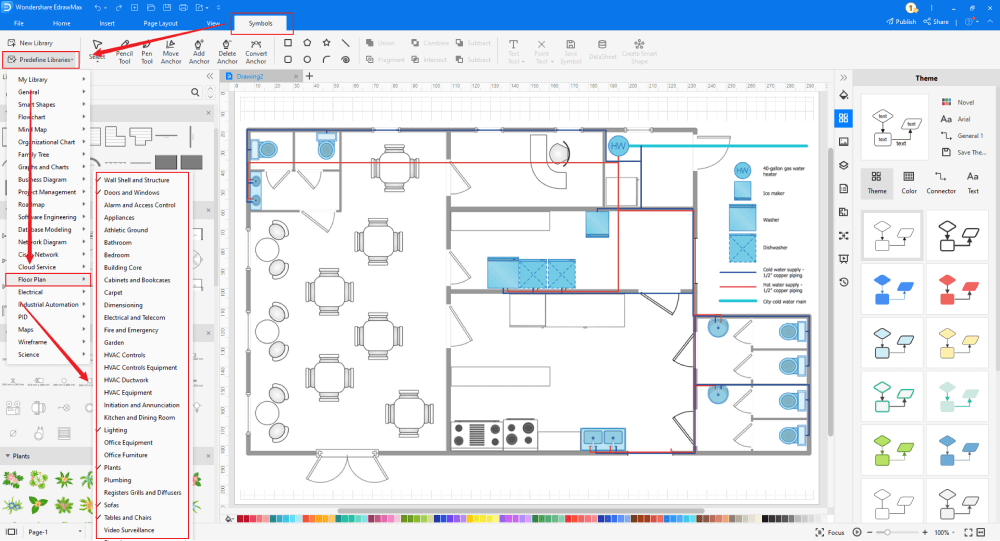
Step 4: Customize the Plumbing Plan Template
After opening it, you will be taken to the canvas, where you can use multiple tools to create your template. You will see a symbol library in the left corner, where you will find thousands of symbols to use in your template. EdrawMax gives you various unique diagramming tools that help you edit the template any way you want. You can change the color and the font line of the template. You can edit the layout and include various elements such as decorative features, air vents, lighting, sprinkler systems, and air-conditioning using reflected ceiling plan symbols from the EdrawMax symbol library. EdrawMax features a comprehensive library with 26000+ professional symbols that you can use for free with an easy drag and drop.
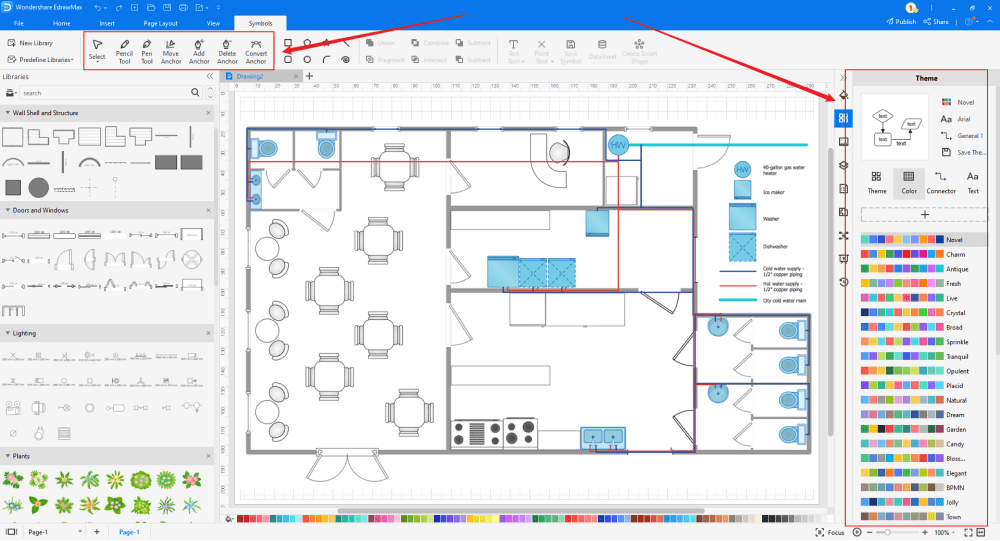
Step 5: Save or Export
Once you have made your template, you can download it to your device. You can export or import your template in multiple formats, such as HTML, graphics, PDF, Microsoft Office, etc. You can share your template on different social media platforms. Next, you can take a printout of it and show that template to others by turning on presentation mode with EdrawMax.
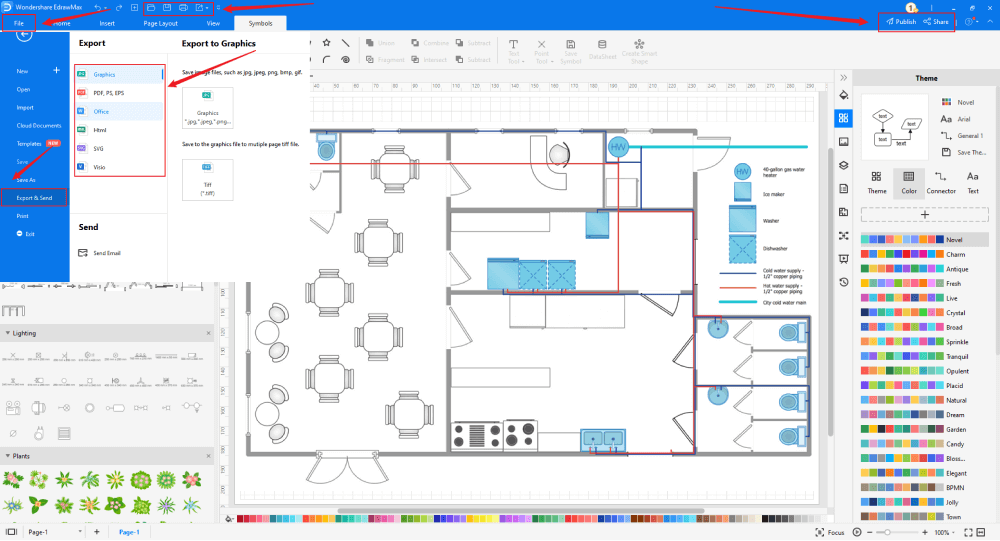
2.2 Make Plumbing Plan Online
You can use the following guide if you want to create your plumbing plan online. EdrawMax gives free templates to select, customize, and share without downloading. It also provides you with all the drawing tools in the EdrawMax software.
Step 1: Click to Duplicate Online
Just click the bottom right corner to choose the 'duplicate' template online. Then, you can go to the online EdrawMax template community. You can head to the fire escape plan template page to learn more or use it directly.
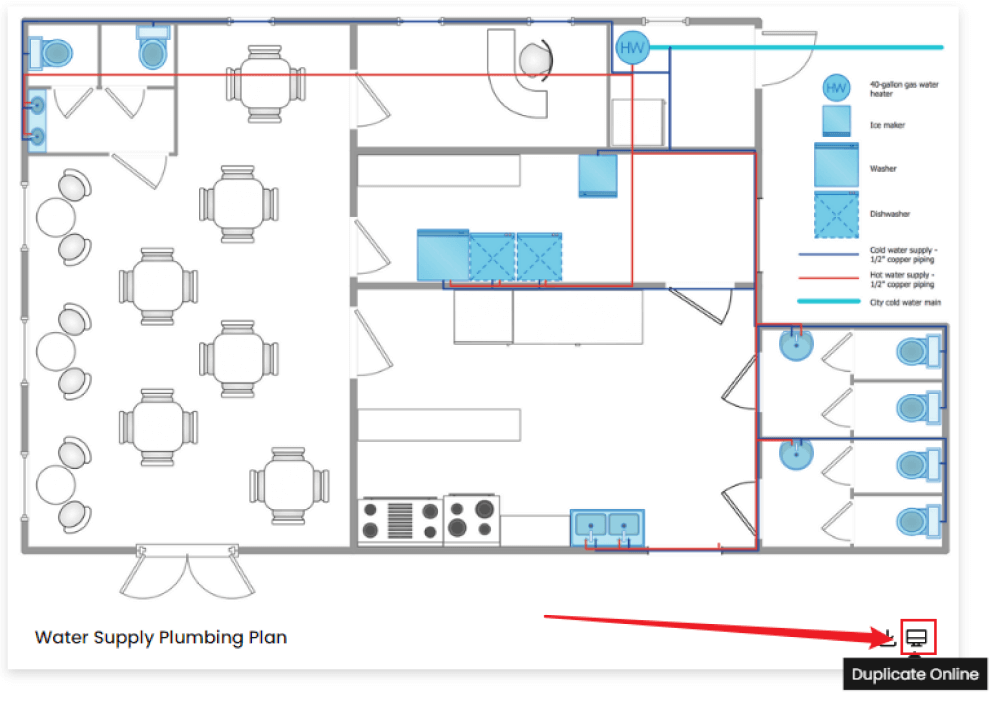
Step 2: Search for More Templates
To find more templates, go to the EdrawMax template community and search for the template you want. You can scroll down or search for the evacuation plan's full name to find it quickly.
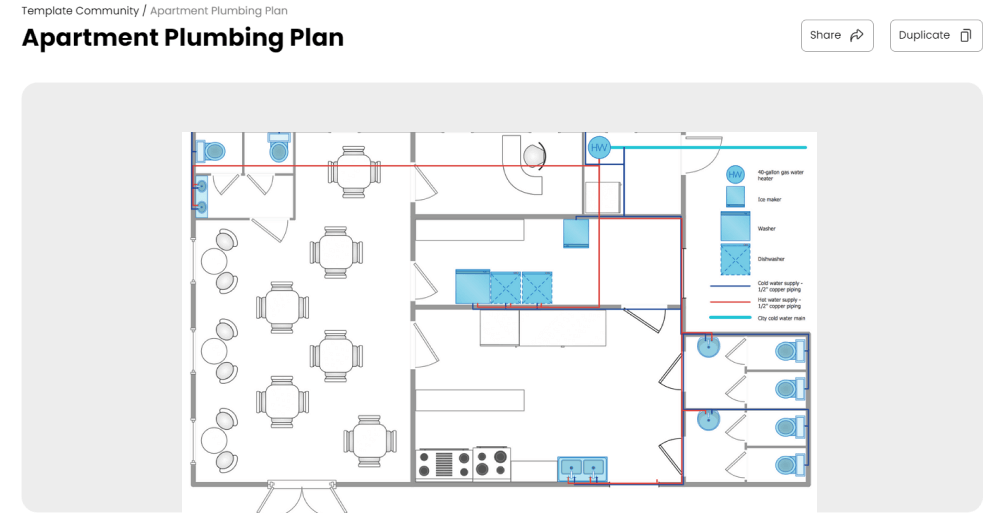
Step 3: Open the Template
After searching, click "Use Immediately" on the template. The selected template will now be pasted on the canvas, and you can edit it according to your requirements. Every plumbing plan diagram is incomplete without symbols. Head to the 'Symbols' section and click 'Plumbing Plan' and 'Floor Plan' to import important symbols. Learn more about plumbing plan symbols and find the symbols you want here.
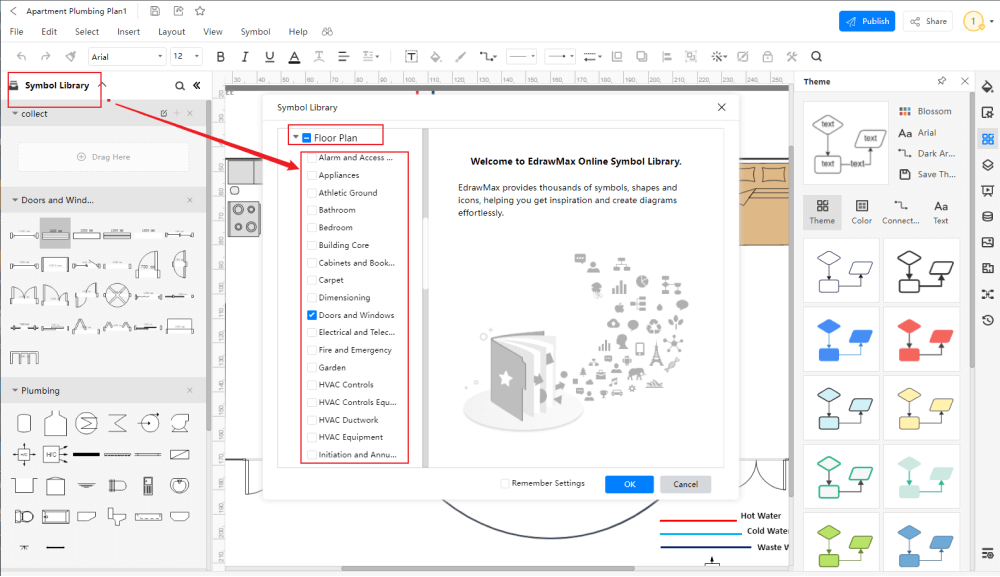
Step 4: Customize the Template
Customize and edit the plumbing plan sample after clicking the duplicate option and getting the drawing canvas with your selected template. EdrawMax features unique diagramming tools that help you customize the template and make whatever changes you want. You can change the color and the font liner of the template. You can edit the layout and include various elements such as furniture, windows, doors, wall shells, and smoke alarms using bedroom floor plan symbols from the EdrawMax symbol library. EdrawMax also features a comprehensive library with 26000+ professional symbols that you can use for free with an easy drag and drop.
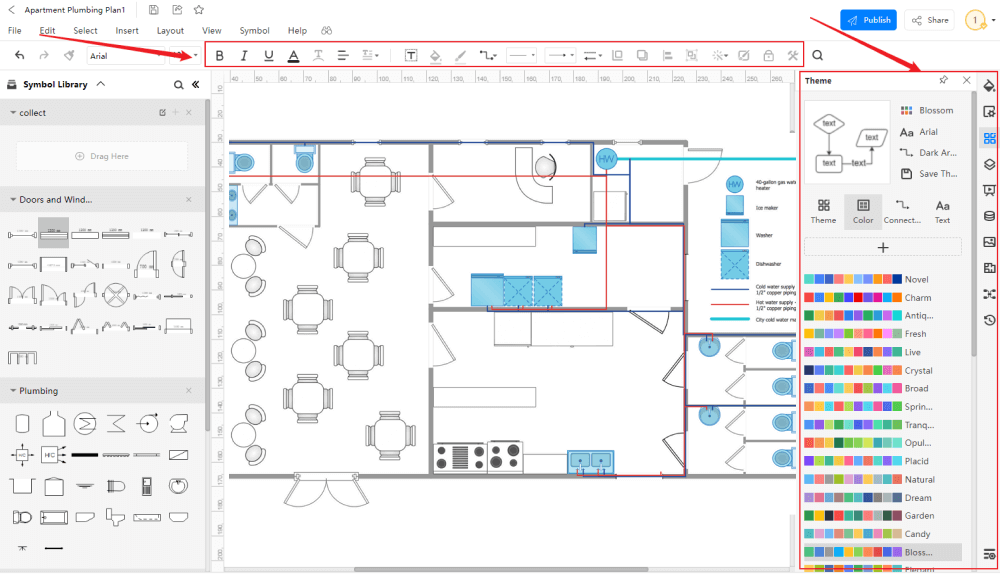
Step 5: Save or Export
After drawing the template, you can download and export it in various formats such as HTML, graphics, PDF, Microsoft Office, etc. You can share your template on different social media platforms. Next, you can take a printout of it and show that template to others by turning on presentation mode on EdrawMax. Or you can "Publish" your plumbing plan in the template community.
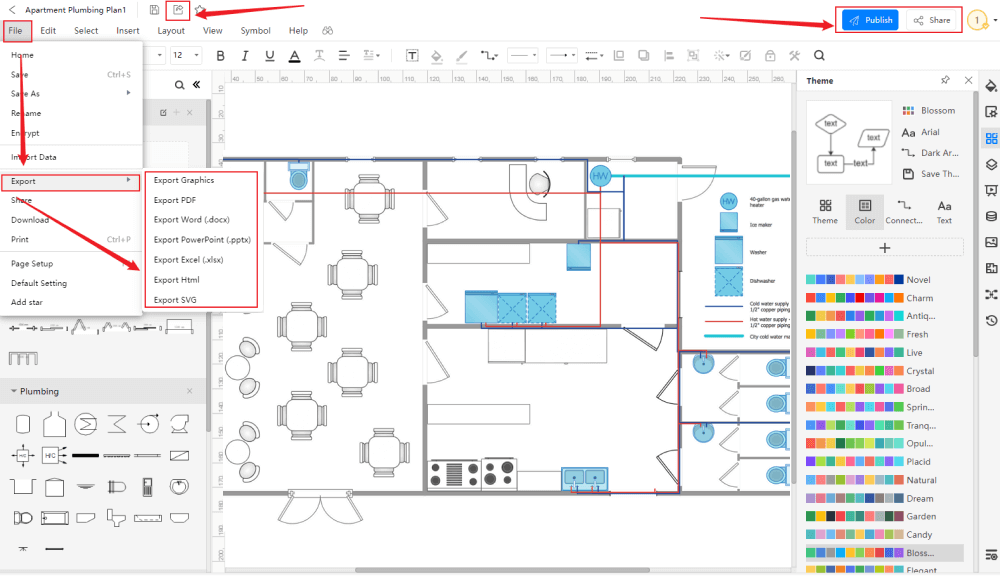
3. Free Plumbing Plan Software
EdrawMax is free plumbing plan software that offers free diagram templates, design symbols, and many more. Through EdrawMax, everyone can visualize their plans and projects, and the ideas can be mapped easily with a few clicks via EdrawMax. An online community on EdrawMax helps other Edrawers with their flowcharts, maps, and diagram templates.
- EdrawMax comes with free plumbing plan examples & templates that are 100 percent customizable and editable.
- With the present built-in option, you can easily share the plumbing plan with your team and see the live revisions made by your team.
- EdrawMax has a strong community of 25 million users who update the template community with their creative projects.
- EdrawMax is considered the best free plumbing plan software for beginners and professionals because of its user-friendly dashboard and easy drag-and-drop feature.
- It supports exporting and importing files into multiple formats, including MS Office, Graphics, PDF, HTML, Visio, and more.
- All of your plumbing plan designs are encrypted to the highest level of security. So you do not have to worry about losing your creative designs.
4. Final Thoughts
A plumbing system is installed in a building or a house that provides water supply, gas supply, drainage system, and sewerage system. A good plumbing system is responsible for the life and worth of a building. The architects draw a plumbing plan to follow a definite layout during construction, installation, relocation, or renovation.
It is created by using various plumbing symbols, and these symbols are used according to the functions and purpose of plumbing components and equipment.EdrawMax is a software that enables its users to draw different plumbing plans according to their floor plan. It allows them to use various drawing and editing tools and countless plumbing symbols.
5. Appendix
The International Plumbing Code is a plumbing code that provides standards and requirements regarding plumbing. It is published by the International Code Council based in Washington, D.C. These rules and standards are accepted worldwide. It sets out the rules for the implementation of new plumbing technologies. The current version of this code is the 2021 edition. These rules are assembled for the health and safety of all water and wastewater-related designs, installation, maintenance, testing, and inspection.
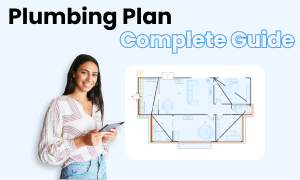
Plumbing Plan Complete Guide
Check this complete guide to learn everything about plumbing plans, like plumbing plan types, plumbing plan symbols, and how to make a plumbing plan.
